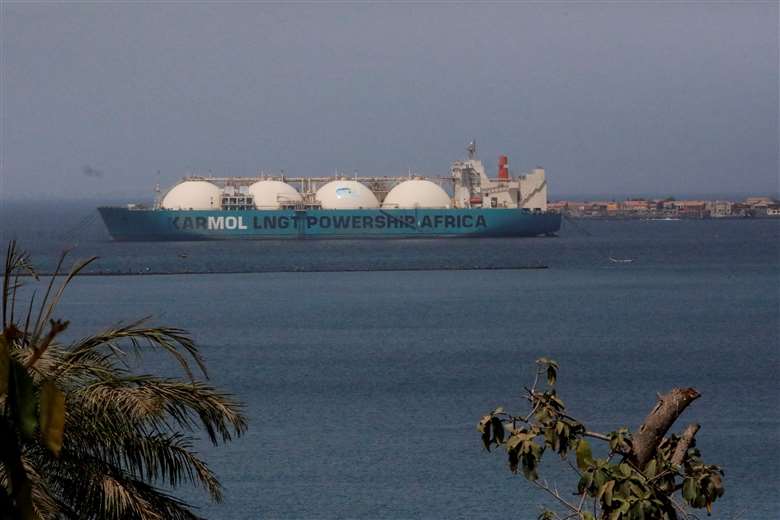
The LNG transport ship called KARMOL LNGT Powership Africa is shown offshore Africa in May 2022. (Photo: Reuters.)
After growing aggressively for a decade, the annual additions to world LNG export capacity will slow abruptly in 2023, a recent study has shown. Four new export projects are scheduled to come online in 2023 for a combined increase of capacity of 1 Bcf/d, the U.S. Energy Information Administration has reported, citing data from trade publications and company websites.
That additional capacity is the lowest since 2013, when a total of 0.7 Bcf/d of new export capacity came into service.
Citing data from the International Group of Liquefied Natural Gas Importers (GIIGNL,) the EIA noted that between 2014 and 2022, the increase in LNG capacity ranged from a low of 1.8 Bcf/d in 2021 to a high of 5.6 Bcf/d in 2018.
The EIA said it expects four new LNG export projects to come online later this year.
The Greater Tortue Floating LNG (FLNG) production unit located offshore Mauritania and Senegal (0.3 Bcf/d capacity).
The Tango Floating LNG production unit located offshore the Republic of Congo (0.1 Bcf/d capacity). The Tango FLNG was previously used to produce LNG in Argentina in 2019–2020.
Tangguh LNG Train 3 in West Papua, Indonesia (0.5 Bcf/d capacity), which will expand the existing project.
Sengkang LNG in South Sulawesi, Indonesia (0.1 Bcf/d capacity). This project was designed to include four liquefaction trains, each with capacity of 66 million cubic feet per day (MMcf/d). However, construction has started on only the first train, and the completion timeline of the project has been extended several times.
In 2022, three new LNG export projects with a combined capacity of 2.2 Bcf/d came online in the United States, Russia, and Mozambique. The Calcasieu Pass LNG project is the largest of the three, with a peak production capacity of 1.6 Bcf/d. In Russia, the Portovaya LNG facility added 0.2 Bcf/d in export capacity. In Mozambique, Coral South Floating LNG production unit 1 added 0.4 Bcf/d with its first cargo loading in November 2022.
In the last 11 years (2012–2022), Australia and the United States led the growth in global LNG capacity by adding a combined 22.7 Bcf/d of LNG export capacity that accounted for 75% of the total global capacity additions over this period.
Regionally, countries in Africa—Algeria, Angola, Cameroon, and Mozambique—built 2.7 Bcf/d of new LNG export capacity over this period, while Russia added 2.6 Bcf/d. Countries in the Asia Pacific region (excluding Australia) added a combined 2.4 Bcf/d of LNG export capacity.
The United States began exporting LNG in February 2016, and within seven years developed the world’s largest LNG export capacity, overtaking Australia and Qatar, with seven LNG export facilities totaling 13.9 Bcf/d of peak production capacity.
In 2024–2025, the EIA expects fewer global LNG export capacity additions than in previous years. “We expect U.S. LNG export capacity to grow as three projects currently under construction are completed,” the EIA stated.
One LNG export project in Russia—Arctic LNG 2—which started construction in 2017, has been delayed and is now tentatively targeting 2023–2026 for bringing its three LNG trains online. New LNG export projects in Canada and Mexico are also expected to be placed into service by 2025–2026.